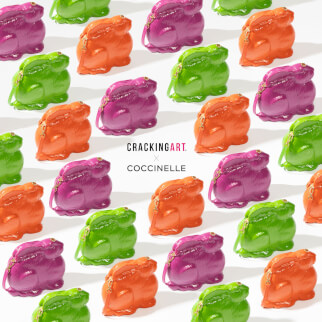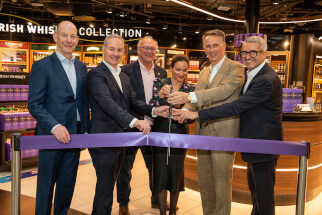IWSR discusses new role for GTR amid recovery
Beverage alcohol brand owners are facing major shifts in global travel retail (GTR) due to a lacklustre post-pandemic rebound in 2021 and ongoing shifts in the nature of the channel, according to IWSR data.
GTR sales staged a partial recovery last year as COVID-19 restrictions were slowly relaxed, but spirits volumes are not expected to regain pre-crisis levels until 2025.
Meanwhile, some companies that cut their investment in the channel during 2020 are aligning their GTR functions more closely with domestic activities, paving the way for duty free to expand its role as a marketing tool.
Many brand owners are treating duty free environments as a brand shop window, particularly in airport settings. Some brand owners, especially those of higher-end brands, are investing in specialist pop-ups and stand-alone brand boutiques instead of the general duty free shopping area, enabling them to engage directly with their consumers.
At the same time, the channel is confronting a raft of medium-term structural issues and headwinds including global inflation, rises in interest rates, which in turn reduce disposable incomes and increase in travel costs and capacity issues, all of which are set to impact leisure travel.
Duty free spirits sales were heavily impacted during 2020, falling by approximately 70%, according to IWSR data, and the recovery in 2021 was only partial, with volumes sitting at 45% of pre-crisis levels. 2022 and 2023 are expected to witness a continued strong recovery.
As by far the largest GTR spirits category, whisky was disproportionately affected by the pandemic in 2020, and its partial resurgence in 2021 was skewed to Europe and the Americas as Asia-Pacific remained depressed.
Meanwhile, brandy was less severely impacted, thanks in part to positive trends in the Americas – and Champagne in GTR is expected to recover to pre-COVID levels by 2023, more quickly than spirits, driven by buoyant trends in its home region of Europe.
In regional terms, the 2021 bounce back in travel retail sales differed across geographies, with more positive trends in the Americas and Europe offset by the continuation of a highly restrictive environment in Asia-Pacific and Australasia, and specifically China, Australia and New Zealand.
While the resurgence in leisure travel during 2021 was an encouraging trend for the channel, it remained difficult for people to plan and for them to navigate, points out Jairo Lopez Suarez, head of global travel retail at IWSR.
“Those consumers who did choose to travel internationally were subject both to movement restrictions and additional time pressures due to increased bureaucracy and testing procedures,” he says.
“This was felt especially in an airport environment, both on departure and arrival. Browsing time in travel retail areas was therefore somewhat curtailed. Social distancing considerations meant that interactive brand experiences also remained restricted,” he says.
Bigger question marks concern the future of business travel, with significant doubts that routine intra-company travel will return to anything like pre-crisis levels, as corporations continue to use conferencing technology and make permanent cuts to travel budgets.
“A reduction in business travel is expected to lead to some hollowing out of the middle price segments (premium to ultra-premium), particularly in the America and APAC regions. Prestige products, however, should emerge relatively unscathed, thanks to their dedicated high-net-worth consumer base who will resume travel.
“While there should by rights be a relative shift towards the lower end to compensate, inflationary pressures are more extreme for standard-and-below offerings at already tight brand owner margins, so this segment is now unlikely to be favoured in the long run,” he adds.
Higher-value products had become increasingly reliant on the purchasing power of Chinese nationals in all geographical areas of GTR in the years before the COVID-19 pandemic, but persistent virus outbreaks and restrictions on travel are continuing to hamper regional recovery.
“Given the Chinese government’s zero-Covid policy and tough lockdown measures, it is now likely that China will remain largely cut off from international travel until well into 2023.
“Not only will this delay a return of genuine travel retail in Chinese international airports, but it will also prevent Chinese nationals – typically high spenders – from purchasing in airport hubs and international GTR prior to China,” concludes Suarez.
Amid severe restrictions on travel in and out of Greater China, the creation of Hainan as a domestic duty free destination for Chinese travellers has been a major success – and the enclave may boost channel activity in the longer term, although its role is set to change in the years ahead.
As international travel resumes, higher-income Chinese nationals are likely to divert their spending back into mainstream GTR, as well as overseas duty paid channels. While increasing numbers of middle-class Chinese consumers may help to sustain increased traffic to Hainan, the shifting nature of the destination will create uncertainty around brand investment there. It is currently unlikely that Hainan will become a significant international tourism destination.

.jpg?&resize.width=322&resize.height=483)








